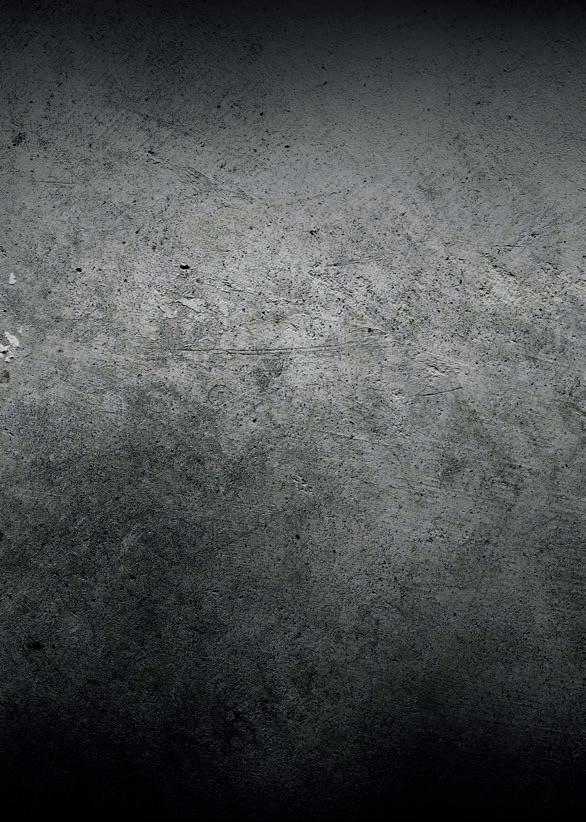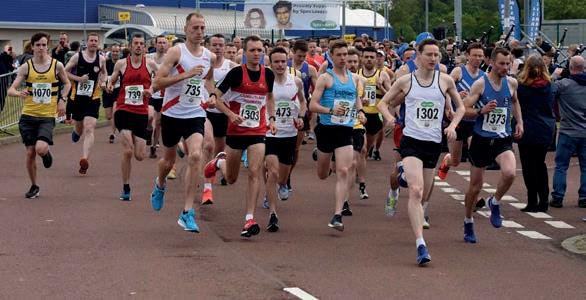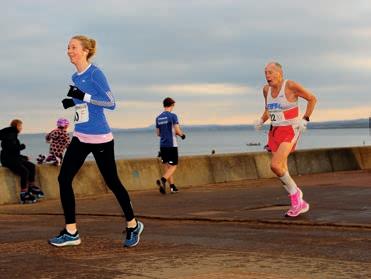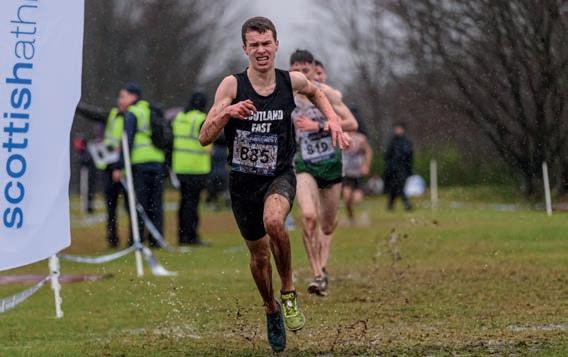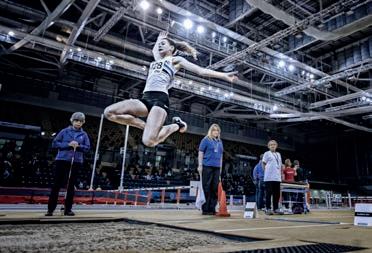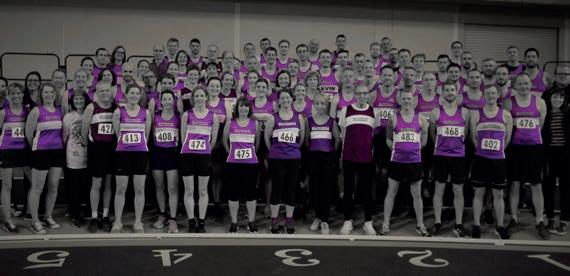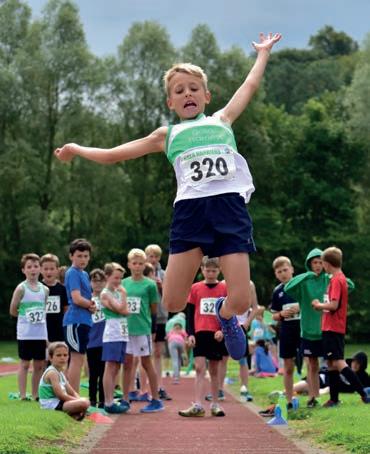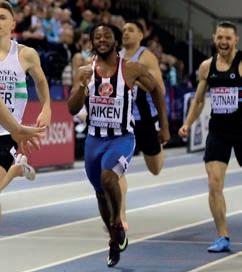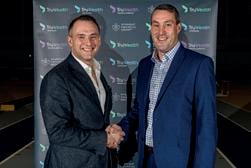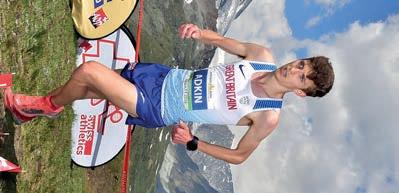
6 minute read
RED-S explained
act BALANCING
Why your training load, nutrition and recovery are vital
Advertisement
By Katy Barden E arlier this year, Edinburgh University Hare and Hounds organised an awareness raising session focused on RED-S (Relative Energy Deficiency in Sport).
The event - hosted by Dr Nicky Keay, an expert sport and dance endocrinologist, and Renée McGregor, a leading sport and eating disorder specialist, aimed to highlight the symptoms and risks of RED-S and provide resources and information to help maximise health and performance.
RED-S is a complex subject, but we’ve aimed to summarise some key notes below which we hope will provide an overview of the discussion, in addition to signposting for further information.
What is RED-S?
RED-S is a condition caused by low energy availability, where nutritional intake is insufficient to cover the energy demands of both exercise training and bodily processes. It has formerly been known as the female athlete triad.
Low energy availability can have adverse effects on many biological systems, such as menstrual function (periods), endocrine system (hormones), musculoskeletal (bone and muscle), gastrointestinal (digestive), PB 2020 | ISSUE 1 34
cardiovascular system (heart and circulation), immune function and growth and development.
As a result of these changes to physical functioning, many aspects of sports performance may be negatively affected, including decreased response to training, impaired co-ordination and increased injury risk. Likewise, there may be psychological effects that either cause, or are the result of RED-S.
What RED-S is not . . .
RED-S is not exclusive to female athletes. High profile male athletes who have experienced RED-S include cyclist Chris Boardman, an Olympic gold medallist, who retired in his early thirties with weak bones – one of the most serious consequences of RED-S - and low testosterone.
Boardman’s nutritional intake was insufficient to cover his training demands and the basic needs of his body, ultimately inducing an energy-saving mode that impacts health and therefore athletic performance.
RED-S is not exclusive to elite athletes, either. In fact, non-elite athletes can be more at risk as they’re less likely to be surrounded by medical support and experienced practitioners.
Everyone responds slightly differently to low energy availability and athletes may experience a variable selection and/ or varying degrees of the health and performance consequences of RED-S.
Low energy availability can arise unintentionally with increased training loads not matched by increased nutrition intake, or intentionally where low body weight confers an athletic or aesthetic performance advantage.
‘There are three variables you can control – your training load, your nutritional input and your recovery,’ says Dr Nicky Keay.
‘If you get this balance right your hormones will be maximised resulting in optimal health and therefore performance. If not, you’re under-selling yourself.’
What to look out for in yourself and others
In female athletes, having periods is key. It is medically incorrect that periods stop because you’re an athlete. Having periods is a sign of healthy hormones, and as noted above, healthy hormones are crucial to maximising performance.
Other things to look out for include a difficult relationship with food/exercise; change of behaviour, mood and sleep patterns; initial and then steady weight loss; injury and illness; digestive problems; and stagnation or deterioration of athletic performance.
High risk individuals include those who are high achievers; determined; selfcritical; obsessive; sensitive; perfectionists; and compulsive.
‘We can all be this person,’ says Renee McGregor; ‘but the key is being aware of it.
‘Perfectionism is often seen as a badge of honour, but why do we need to keep fixing something when we’re already great? Perfectionism usually develops as a response and need to seek approval, but sometimes we need to be ok with where we’re at. This isn’t really talked about and is fundamentally one of the problems.
‘If you’re comparing yourself to someone you wouldn’t normally be compared to, you’re setting yourself up to fail.’
Note that you don’t have to experience all of the above symptoms to have RED-S. It’s most likely that you will only experience a few symptoms and possibly none in the early stages of low energy availability.
The role of social media
‘I have a love/hate relationship with social media,’ says McGregor.
‘Take Instagram as an example. Think about the people you follow. We tend to follow the people we’re interested in, the same types of people, so we get a confirmation bias, it’s validation. If you want to believe that something is the best, and you follow people that believe that, it validates that behaviour - it’s what we want to hear. It becomes our truth.
‘Actually, it’s important at times to be a purple cow. If you’re driving along the road and you see sheep and cows, you don’t think much of it, but if you saw a purple cow you’d pay attention. ‘What so many people experience is an echo chamber – they hear the same thing over and over so they start to believe it. But we all need to be challenged.’
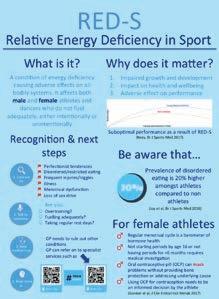
Advice and further information
Whether you are a coach, teacher, parent or friend, communication is key. Having a discussion with your athlete, son/daughter or friend is a priority in order to determine what steps need to be taken to address any issues and support optimal health and performance.
‘It’s a difficult one, but communication and conversation is the best way to deal with this,’ says McGregor. ‘If, for example, you’ve been asking your friend to come out and they continue to say ‘no’, then ask them why or when works for them. Help them see they are different and it’s affecting your friendship.
‘Question their beliefs. If they don’t think they’re good enough, ask them where that thought has come from. Most of the time these perceptions and beliefs come from an assumption. You need to get them to think differently.’
If you’re concerned about your own - or someone else’s - training practices or approach to food and training, particularly in relation to RED-S, you can find more advice here:
RED-S Awareness Session - What They Said:
Abi Plowman, EU Hare and Hounds:
‘Renee and Nicky provided a great overview of the dangers of RED-S, but arguably more importantly, the physical and mental benefits of fuelling training properly. These are subjects that should matter not only to elite athletes, but to anyone who exercises, as well as to doctors and coaches.
‘Addressing RED-S is no doubt a huge challenge for many, but Renee and Nicky highlighted the importance of openly talking about it, not only to raise awareness of the condition, but to question our motivation for making certain food or exercise choices, and to support our friends and family who may be struggling.’
Lydia Blythe, EU Hare and Hounds Female Captain and event organiser:
‘I think the knowledge and information provided by Renee and Nicky is crucial for the longevity of female athletes, specifically within running, and I hope that we can all continue to make RED-S more well-known and addressed within sport. ‘
Holly Little, Queen Margaret University and Scottish Student Sport XC Champion 2019:
‘I thought that it was so important to understand and it became evident that, in fact, a lot of people don’t know and/or realise the severity of it.
‘I learned how wide the range of consequences are if you neglect even one part of your body and the information spoken about was actually pretty scary!
‘It was really comforting to know that there are so many people out there that want to make a difference and change things surrounding RED-S and that the awareness of it is definitely expanding.’
I I I WEST DISTRICT 10K CHAMPIONSHIPS I I I
